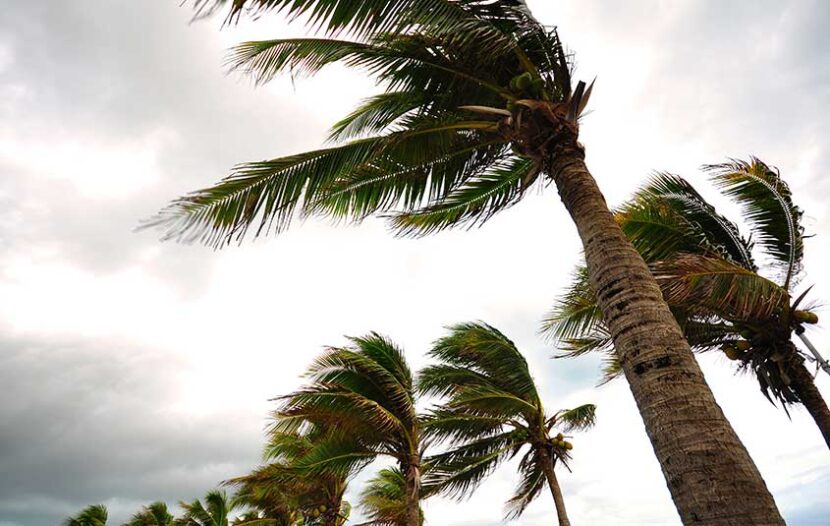HAVANA (AP) — Hurricane Ian tore into western Cuba on Tuesday as a major hurricane, with nothing to stop it from intensifying into a catastrophic Category 4 storm before it hits Florida on Wednesday.
Ian made landfall at 4:30 a.m. EDT Tuesday in Cuba’s Pinar del Rio province, where officials set up 55 shelters, evacuated 50,000 people, rushed in emergency personnel and took steps to protect crops in Cuba’s main tobacco-growing region.
The U.S. National Hurricane Center said “significant wind and storm surge impacts” were occurring Tuesday morning in western Cuba. Ian sustained top winds were 125 mph (205 kmh) and as much as 14 feet (4.3 meters) of storm surge was predicted along Cuba’s coast.
Ian was forecast to strengthen even more over warm Gulf of Mexico waters, reaching top winds of 140 mph (225 kmh) before making landfall again. Tropical storm-force winds were expected in Florida late Tuesday, reaching hurricane force Wednesday morning.
“Right now we’re focusing on west central Florida area as the main area for impact,” hurricane specialist Andy Latto told The Associated Press on Tuesday.
“This is a really really big hurricane,” Florida Gov. Ron DeSantis said, warning of damage all across the state.
Hundreds of thousands of Floridians faced mandatory evacuation orders as the center expanded its hurricane warning to include Bonita Beach north through Tampa Bay to the Anclote River. Fort Myers is in the hurricane zone, and Tampa and St. Petersburg could get their first direct hit by a major hurricane since 1921.
“People on the barrier islands who decide not to go, they do so at their own peril,” Roger Desjarlais, Lee County’s county manager, said early Tuesday. “The best thing they can do is leave.”
While Ian’s center passed over western Cuba, with tropical storm force winds extending outward 115 miles (185 kilometers), Cuba’s capital was getting rain and strong gusts Tuesday morning. Havana’s residents openly worried about flooding ahead of the storm, with workers unclogging storm drains and fishermen taking their boats out of the water.
“I am very scared because my house gets completely flooded, with water up to here,” Adyz Ladron said, pointing to his chest.
In Havana’s El Fanguito, a poor neighborhood near the Almendares River, residents packed up what they could.
“I hope we escape this one because it would be the end of us. We already have so little,” health worker Abel Rodrigues said.
Ian’s forward movement was expected to slow over the gulf, enabling the hurricane to grow wider and stronger before it brings punishing wind and water to Florida’s west coast. Forecasters said the surge of ocean water could reach 10 feet (3 meters) if it peaks at high tide. Rainfall could total 16 inches (41 centimeters) inches with as much as 24 inches (61 centimeters) in isolated areas. Coastal communities could be inundated.
As many as 300,000 people may be evacuated from low-lying areas in Hillsborough County alone, county administrator Bonnie Wise said. Some of those evacuations were beginning Monday afternoon in the most vulnerable areas, with schools and other locations opening as shelters.
“We must do everything we can to protect our residents. Time is of the essence,” Wise said.
Lee County — where Fort Myers is on Florida’s southwest Gulf Coast — also issued mandatory evacuations early Tuesday for low-lying areas including Fort Myers Beach, Sanibel and Bonita Beach, where about 250,000 people live, after forecasters expanded the hurricane warning area.
“With the kind of tidal surge we’re talking about, it would not be uncommon for both islands to be overwashed, and it’s a dangerous place to be,” Desjarlais said. “We cannot by law force people off the islands, but we strongly recommend that they go.”
Floridians lined up for hours in Tampa to collect bags of sand and cleared store shelves of bottled water. DeSantis declared a statewide emergency, and mobilized 5,000 Florida state national guard troops, with another 2,000 on standby in neighboring states.
President Joe Biden also declared an emergency, authorizing the Department of Homeland Security and the Federal Emergency Management Agency to coordinate disaster relief and provide assistance to protect lives and property. FEMA has strategically positioned generators, millions of meals and millions of liters of water, White House press secretary Karine Jean-Pierre said.
Playing it safe, NASA was rolling its moon rocket from the launch pad to its Kennedy Space Center hangar, adding weeks of delay to the test flight. The airports in Tampa and St. Petersburg announced they’ll close Tuesday afternoon. And the Tampa Bay Buccaneers said they would relocate football operations to the Miami area on Tuesday in preparation for next weekend’s game against the Kansas City Chiefs.
Damaging winds and flooding was expected across the entire peninsula as Ian moves north, reaching into Georgia, South Carolina and other parts of the southeastern United States on Friday and Sunday, the hurricane center said.

